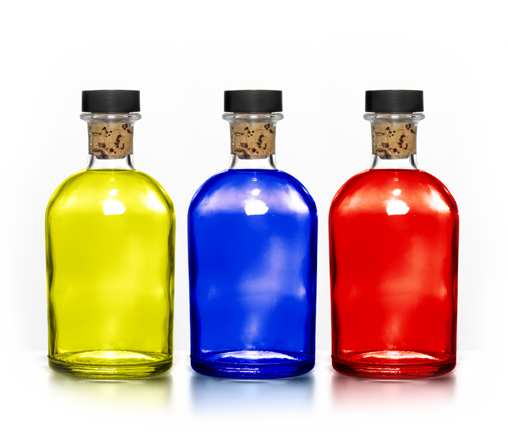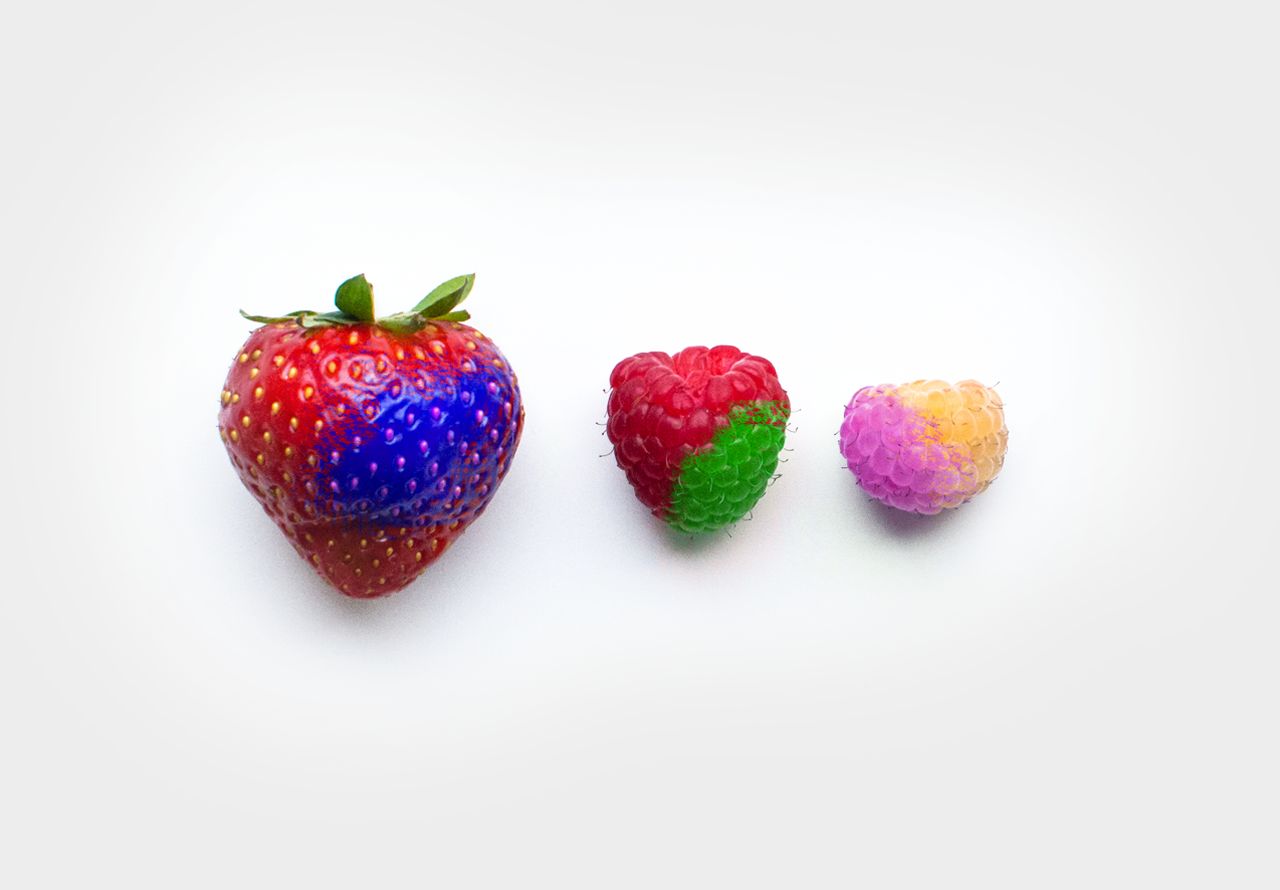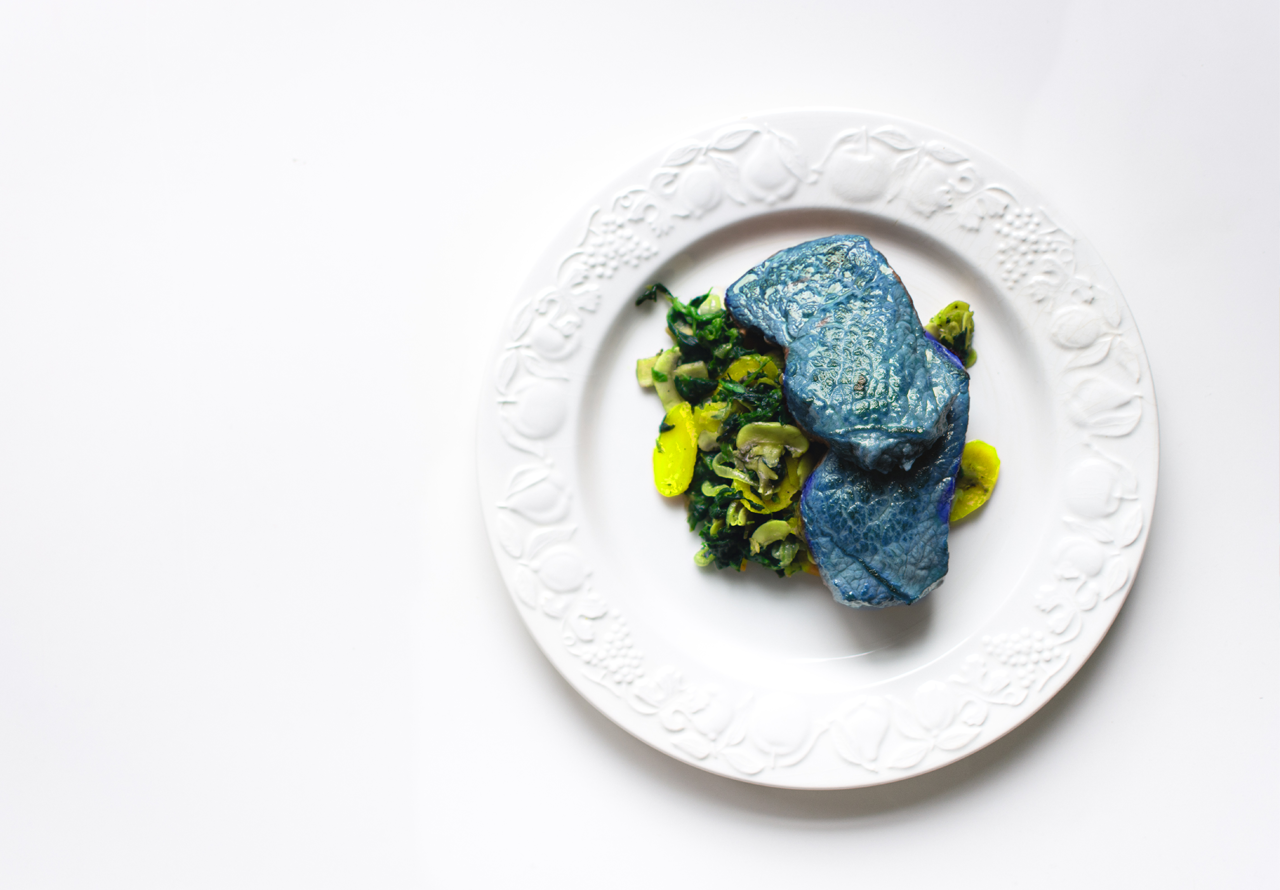The goal was to research different techniques to gather qualitative data and include co-creation in the process.
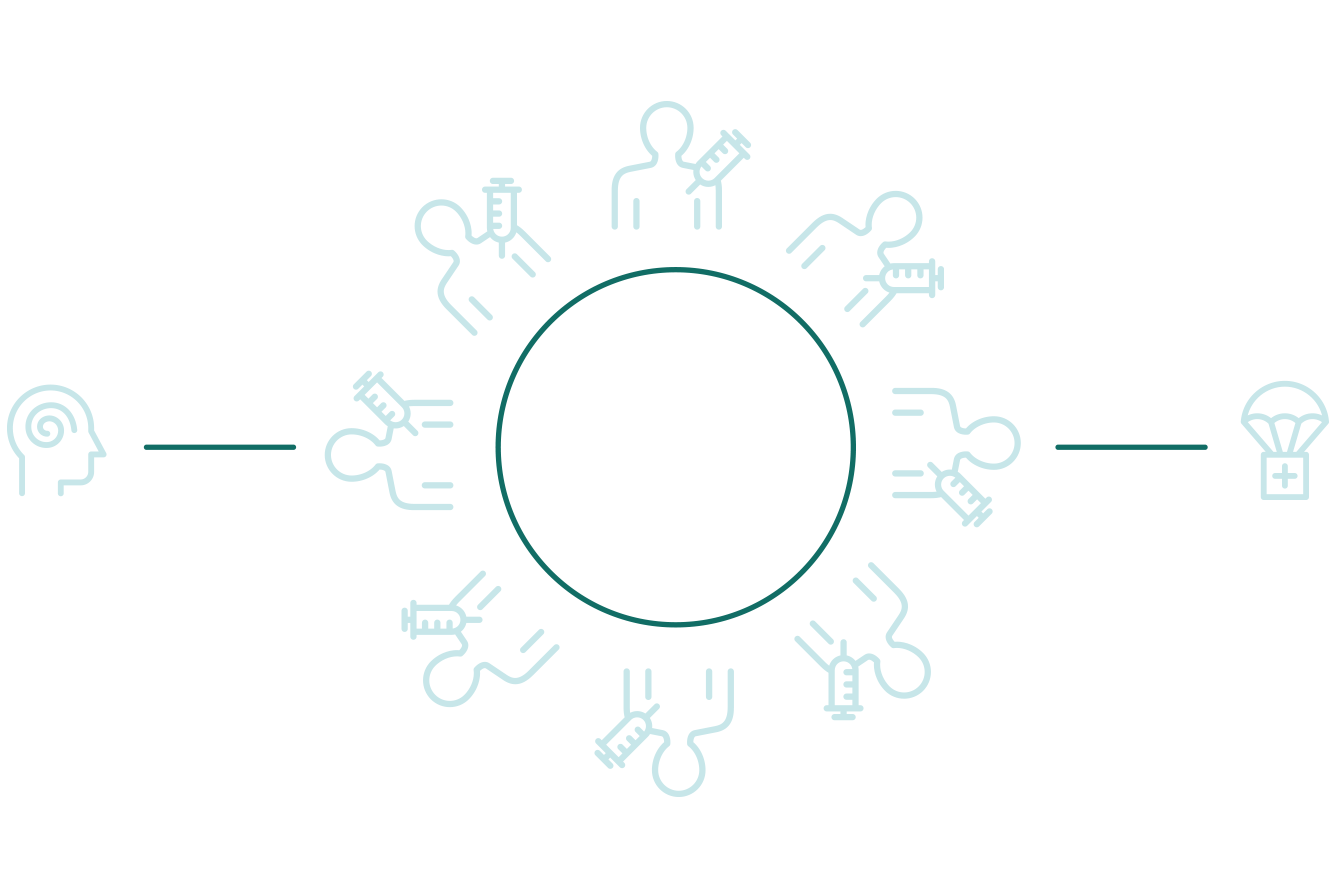
Cultural Probes
For my case, classical research methods are impractical and inadequate, because the chemotherapy patients suffer from a serious illness and don’t want to spend hours participating in workshops, while they could spend time with their beloved ones.
Therefore I created a little package with following contents:
– Sheet explaining the purpose
– 6x liquid/powder food coloring
– Printout of different foods & dishes for 1 week
– Glue & Pencils (colors matching to food coloring)
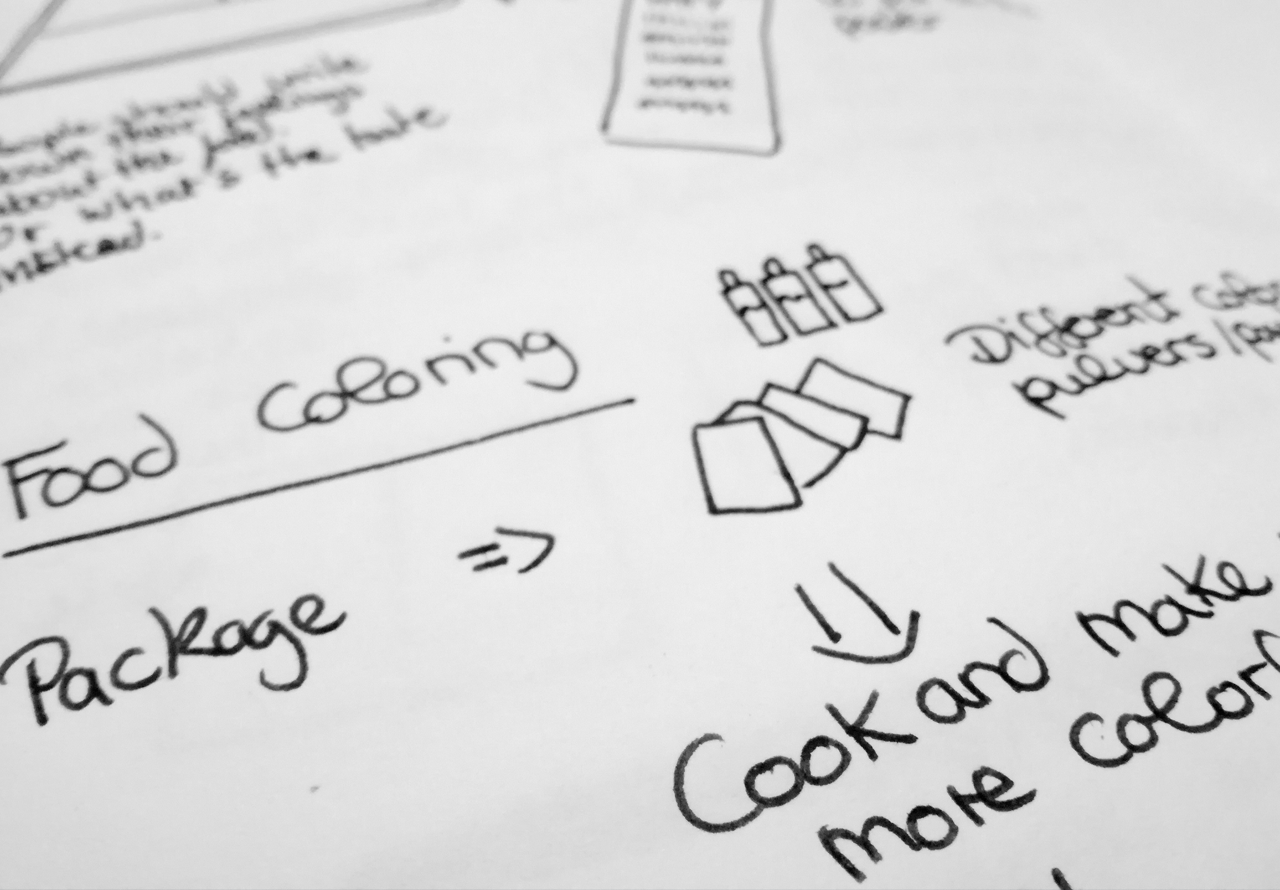
food.related
During a chemotherapy it can happen that the gustatory sensation changes because of the medication. Therefore it can happen, that patients, which are anyway weakened by therapy, eat less food than they needed.
Therefore the main goal of the project was, to develop approaches to make meals more perceivable during chemotherapy as an essential part and increase active involvement of designing the food to make their meals more enjoyable.
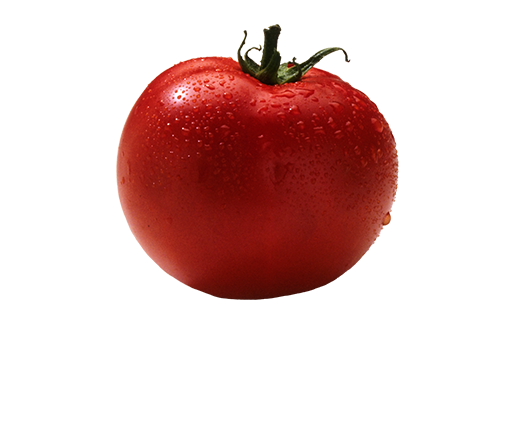
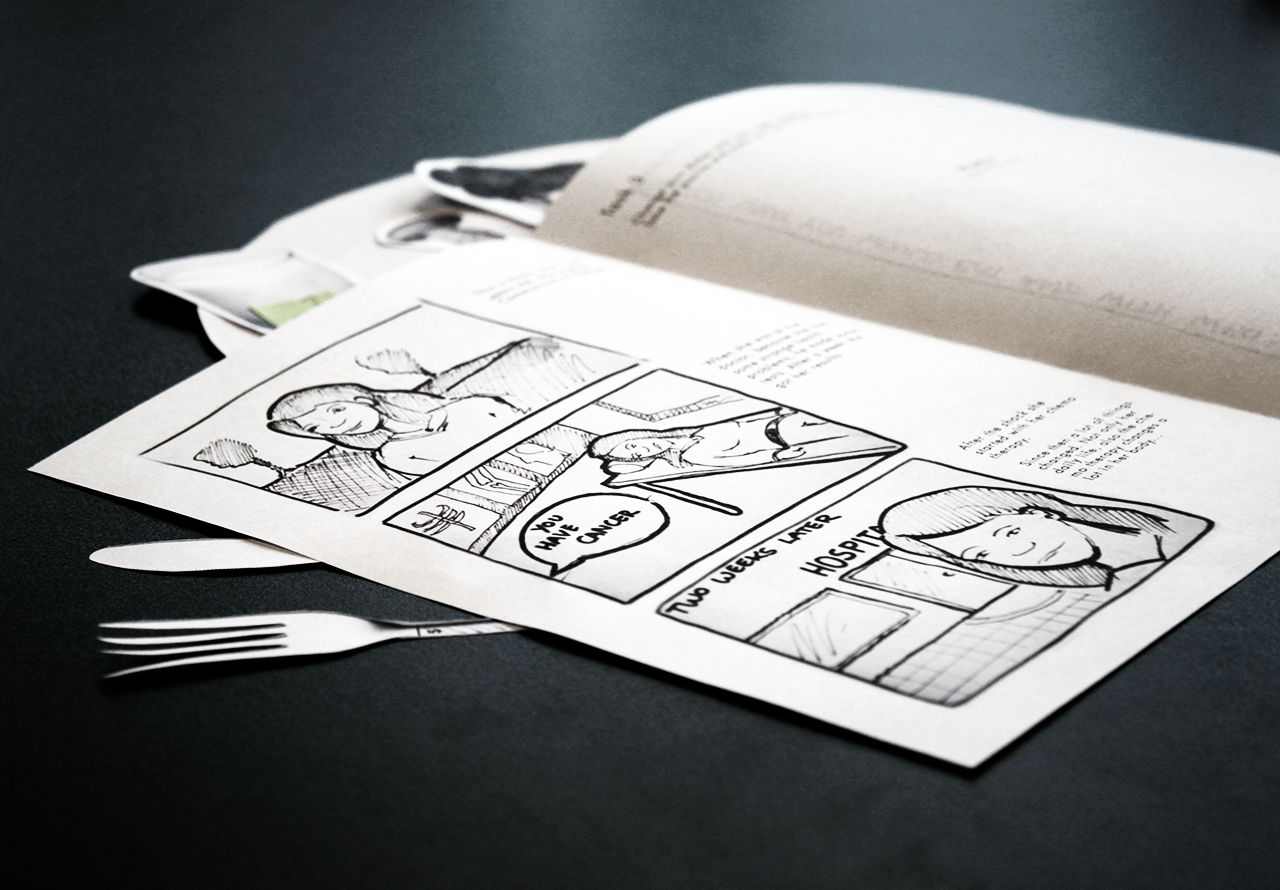
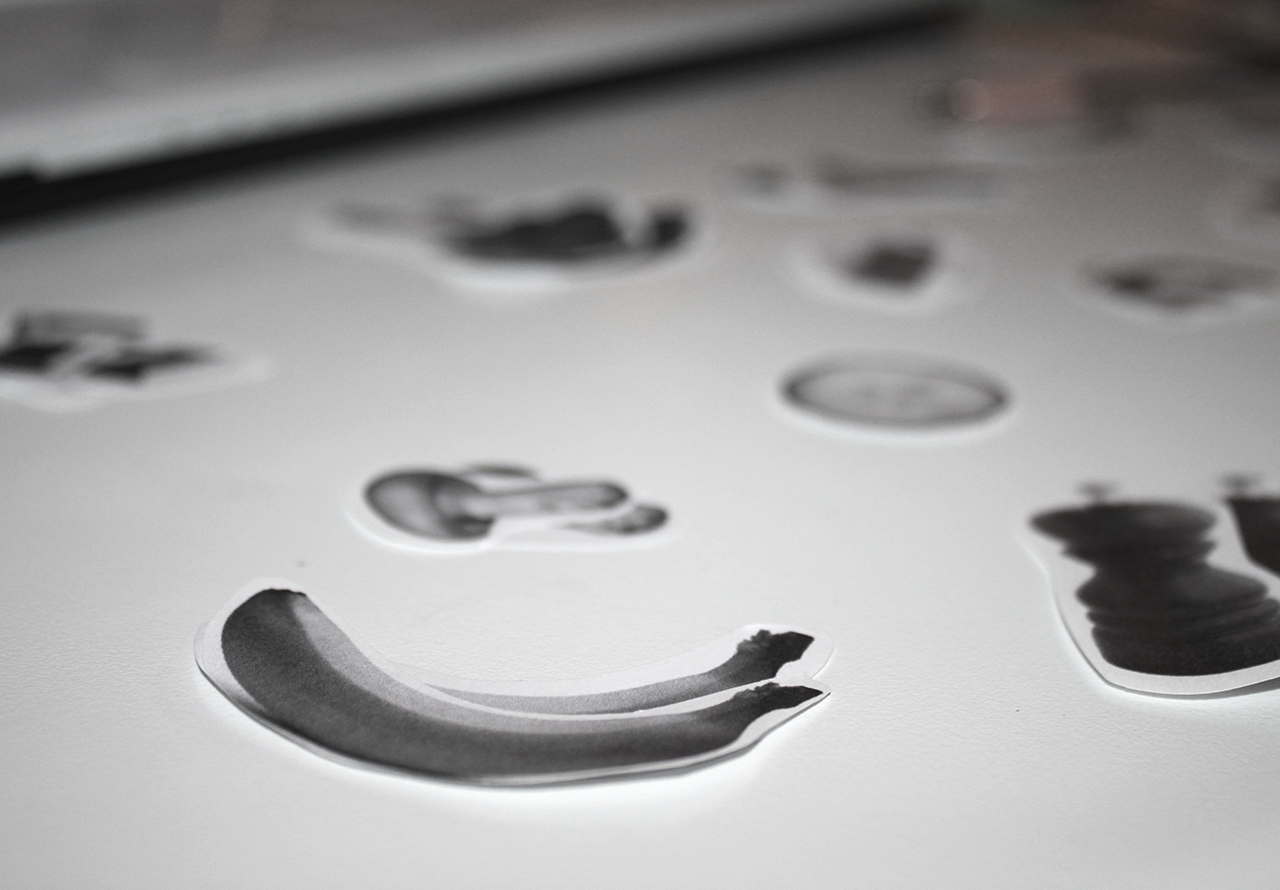
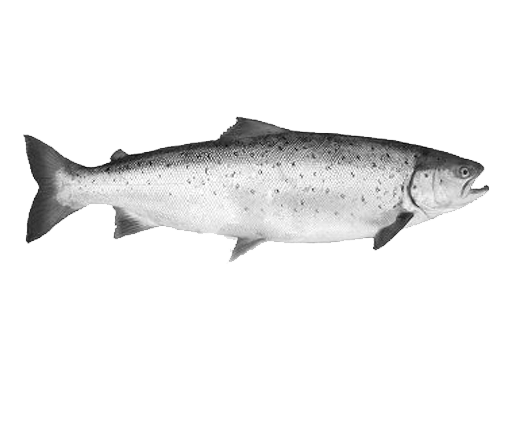
Part 1 – Workshop of 1 hour
First part was that the subject group was offered a short story, which summarized their current situation. Afterwards the moderator handles the fork, knife, spoon and dish to the subject group. The essential part of the workshop was, that it was not in a clean and sterile atmosphere. Therefore was set in the Cafeteria of the university during lunchtime.
In the middle of the table was a pan and pot and a lot of paper foods and groceries. First part was, that they had to select foods which they loved before chemotherapy and which foods are enjoyable during chemotherapy.
Then a group discussion was set, to share experiences with other affected people.
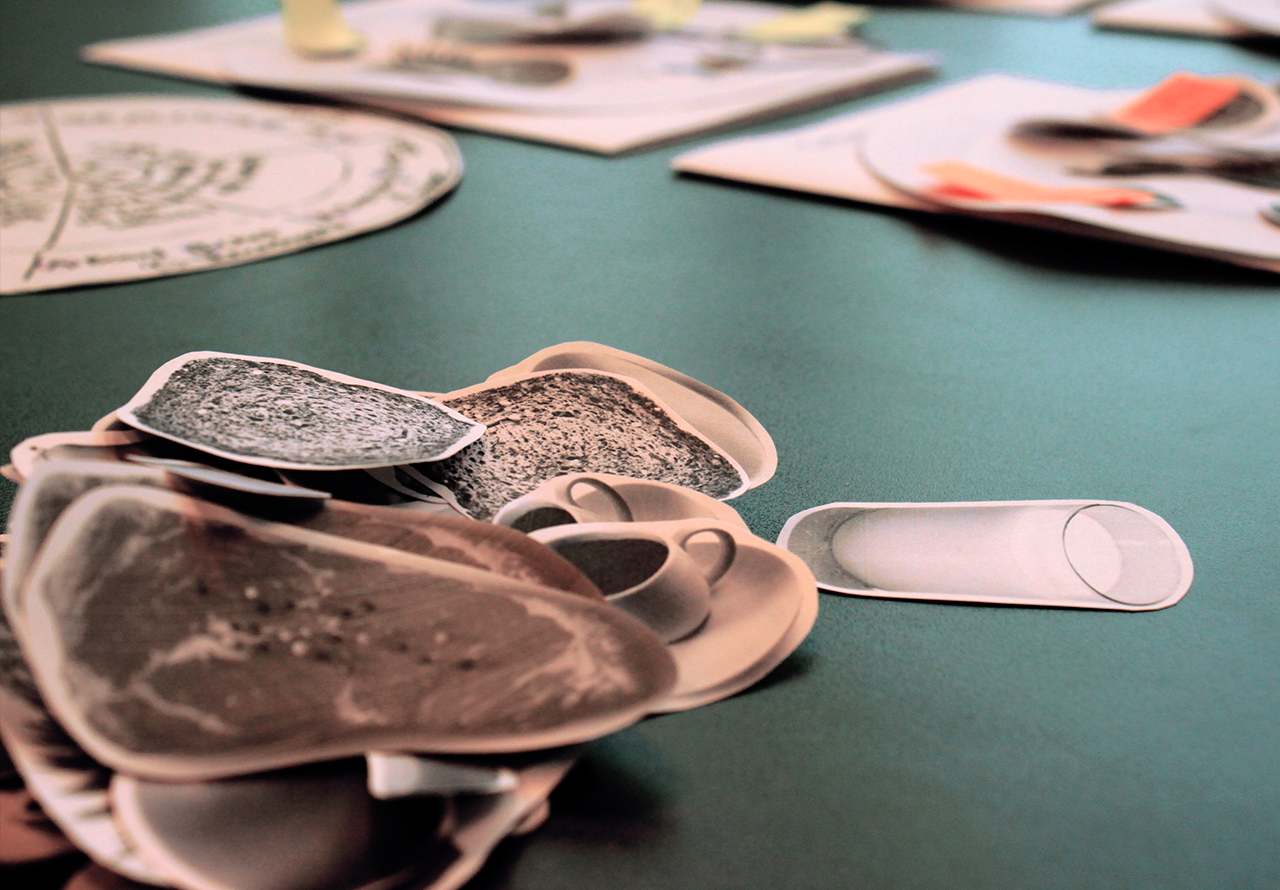
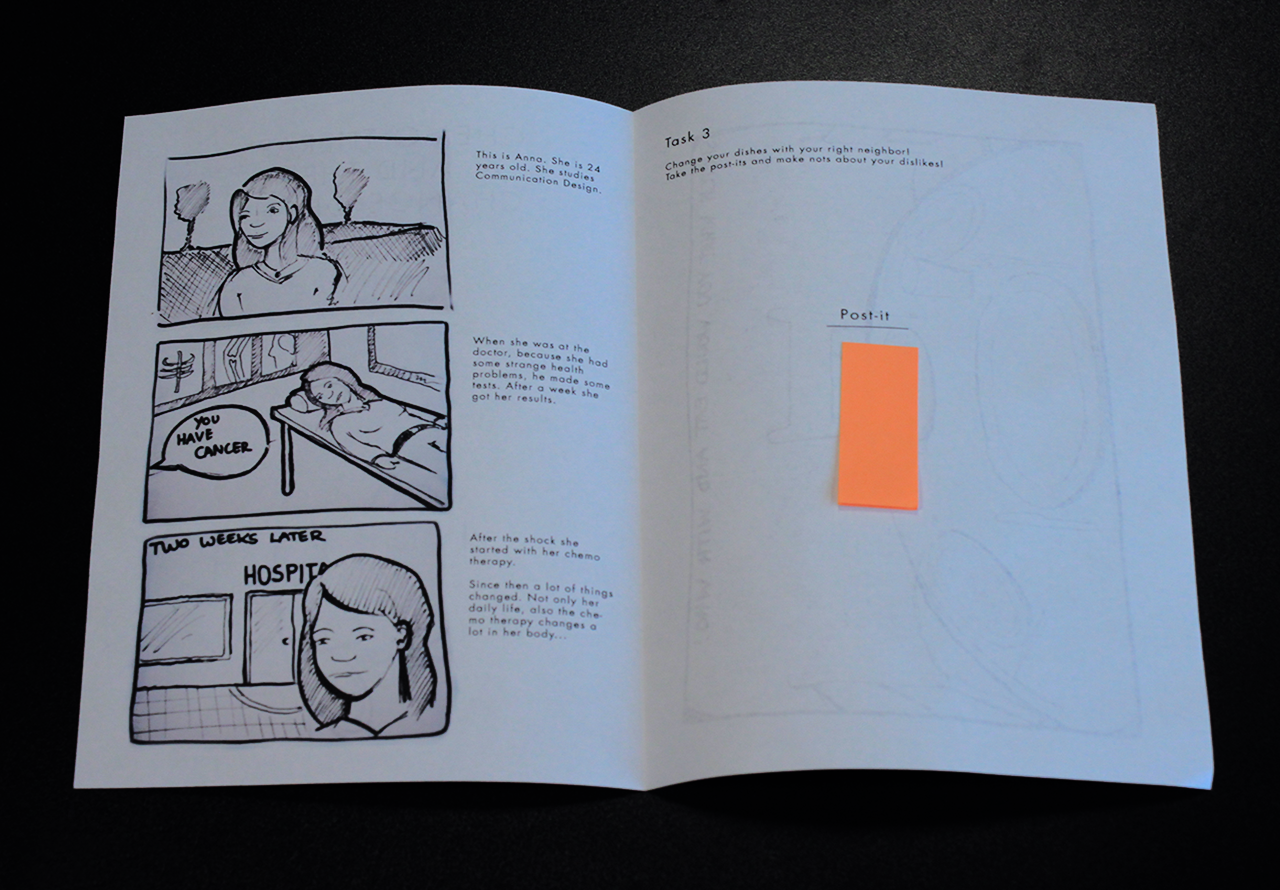
Part 2: Questions & Meals as social experience
The next tasks was to answer six questions regarding food and share their experiences with others. The final task was to share how a perfect dinner would look like and with which person/s they would like to have the dinner.
As the last task, they got handed over the cultural probes, which they should use for the next 6 days. Ideally, the week before a meal plan was set for each day, which was repeated the next week with the cultural probe set.
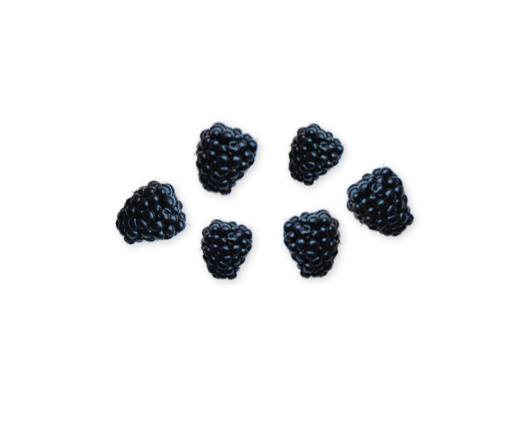
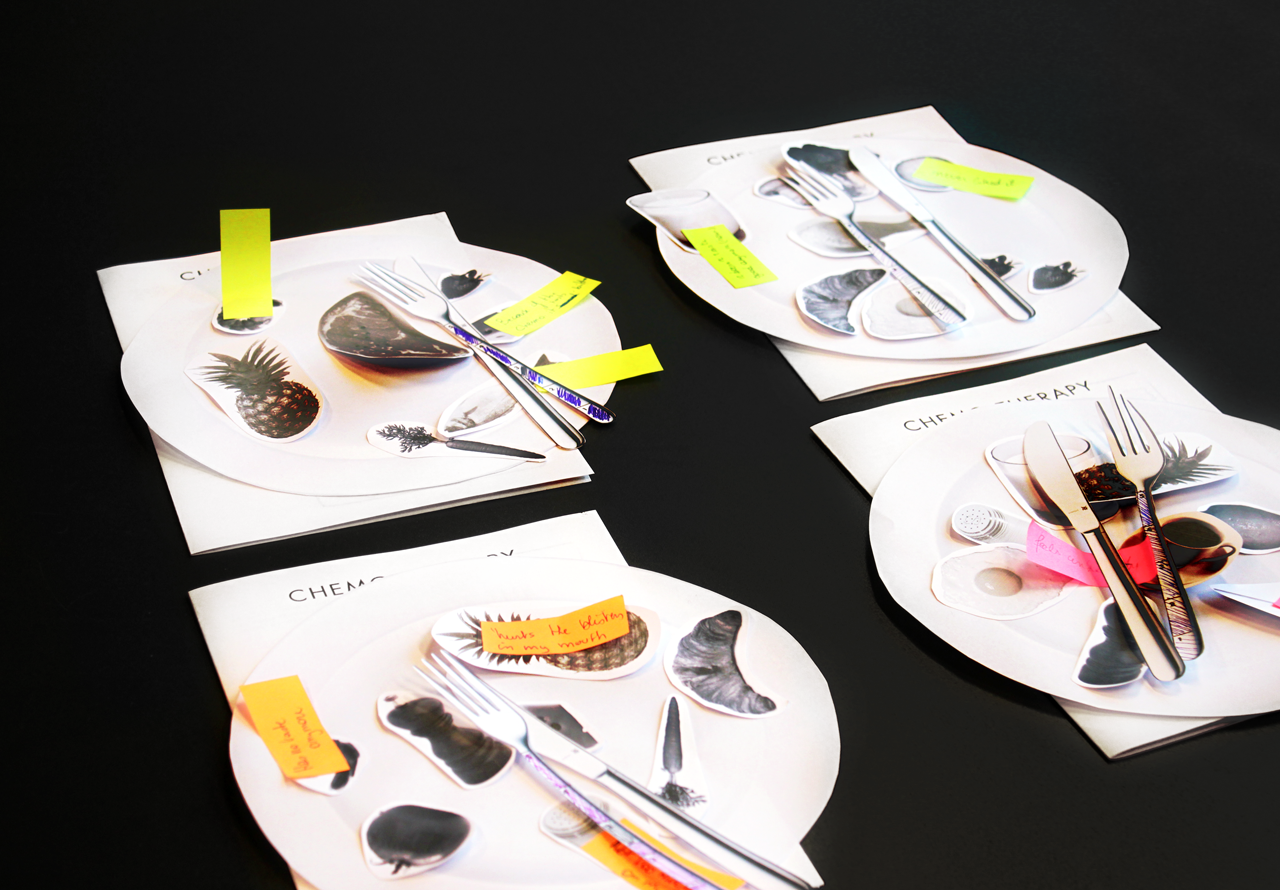
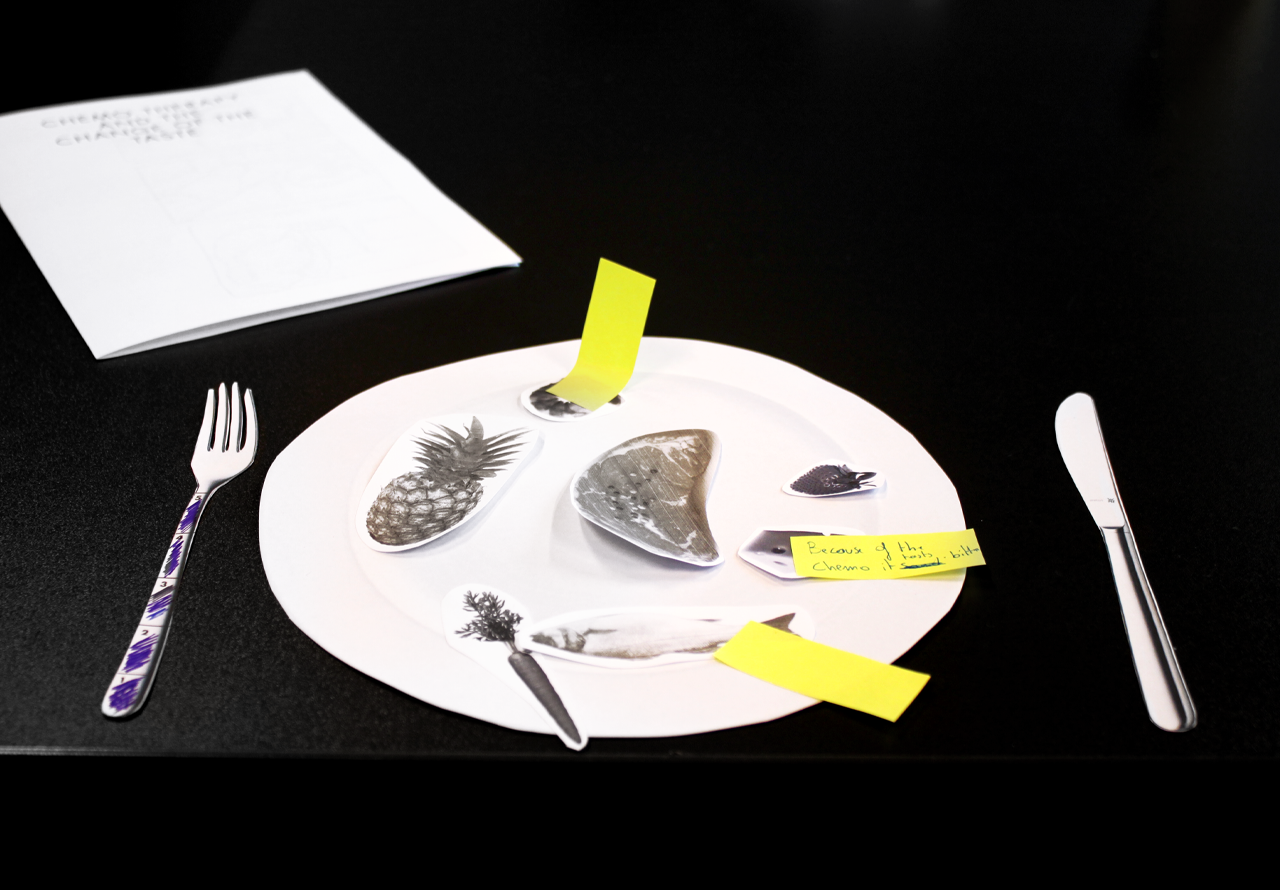
Final idea
The final idea was, to team up with hospitals to create special meals and enhance the visual presentation of the food with natural food coloring. Also in discussion was to give patients the ability to create modular their own meals with an app connected to the hospital kitchen.
Main learning of the process was, that it was very important to the subject group to have self-determination, because in this phase of their life basically all things are determined by circumstances and others. Therefore they felt the urge to gain self-determination in the decision of their food and how it was served.
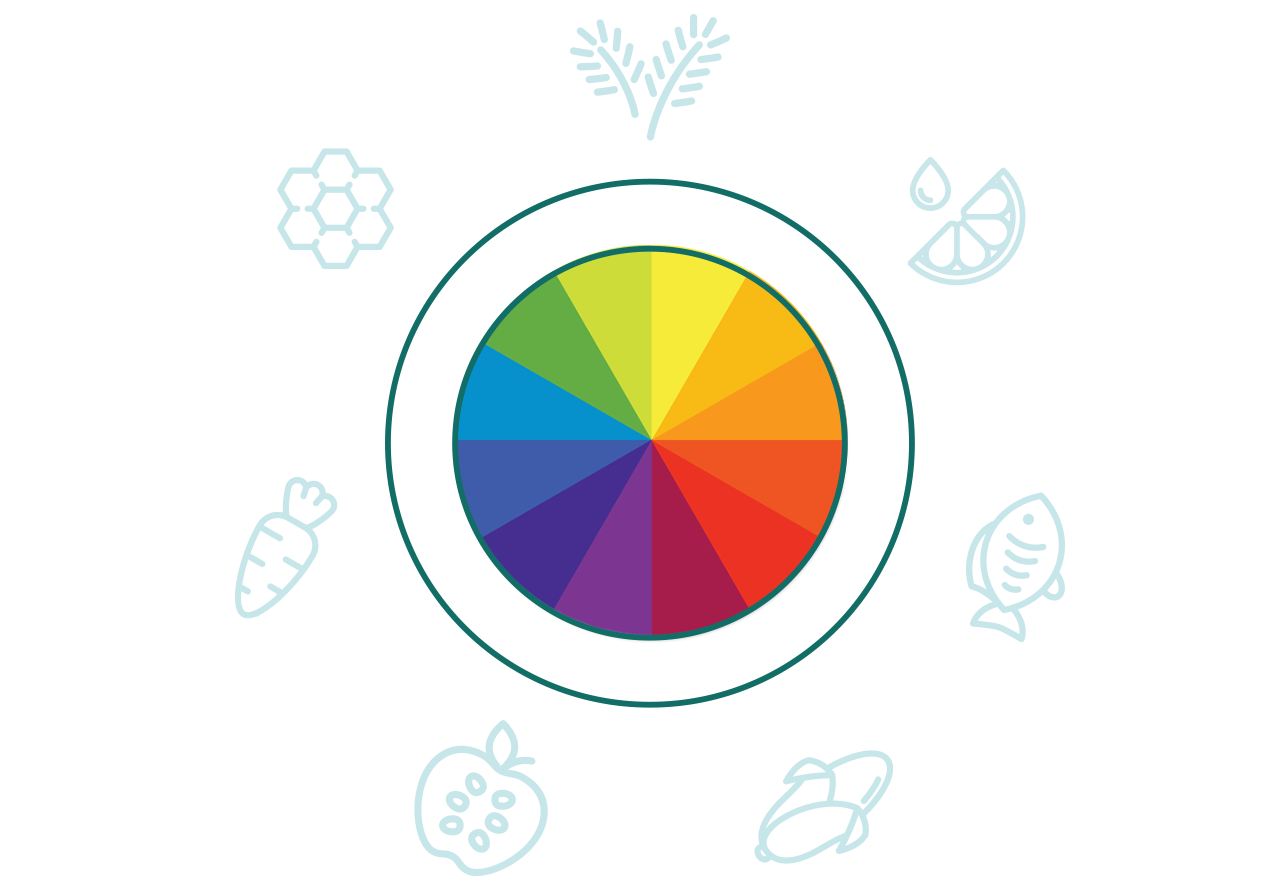
Research on food coloring
To give the patients the ability to create their own food, I had to made research about food coloring. Concernes in the group were raised, that food coloring was not healthy and therefore impractical.
I found out, that there are natural food colors available, which are produced by natural ingredients (such as beetroot, spinach, etc.)
Of course a medial professional, specialized in food needs to be involved when the project is going to processed further.
